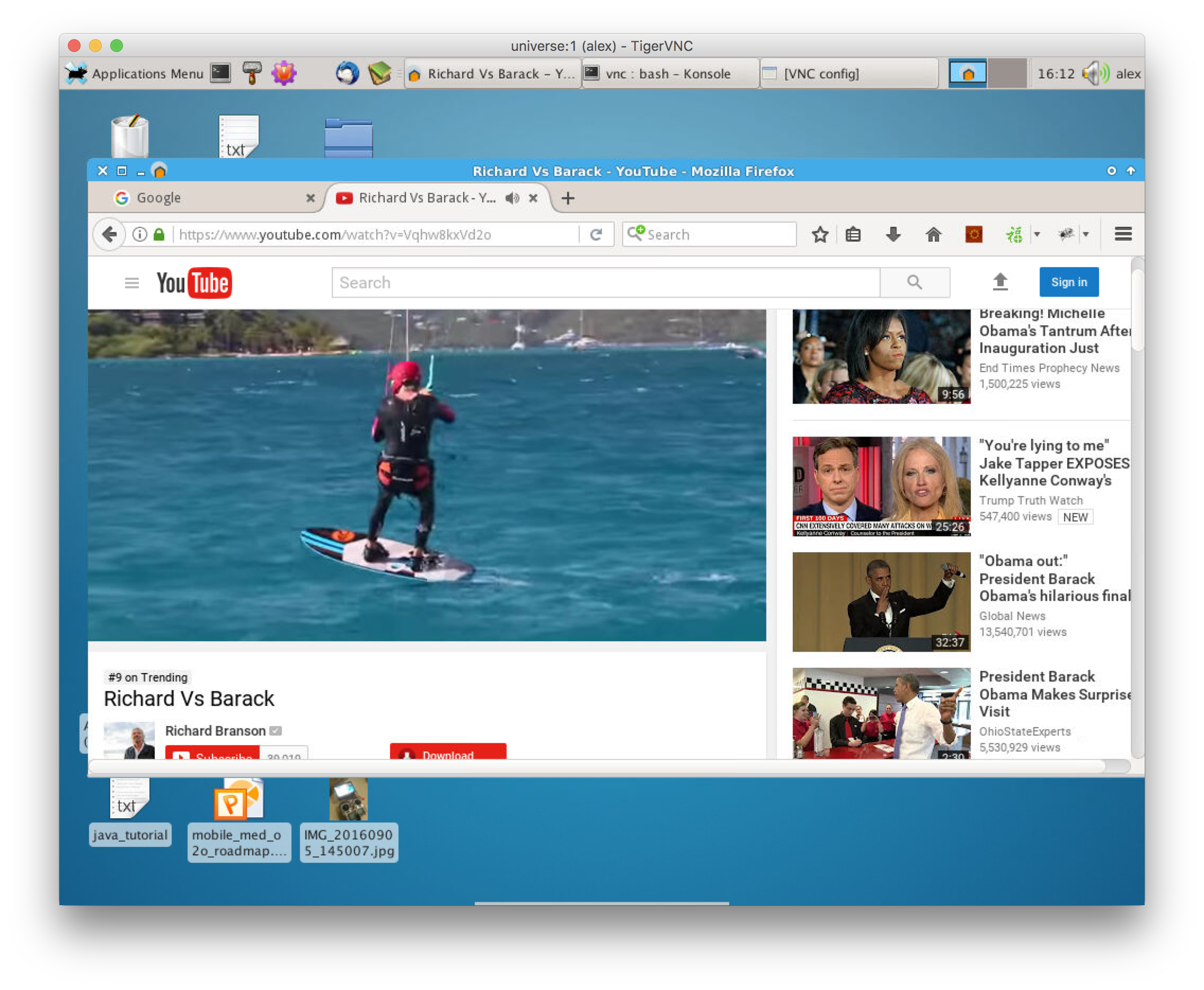I got a brand new MacBook Pro 13" 2016. I used to work on GNU/Linux for decades.
I don't want to change my working environment and life style. So I am going to connect to my work station remotely. This is why I need VNC.
VNC is a stand protocol. We can find some free/opensource VNC software for both client and server.
There are two I mainly use, tightvnc and tigervnc.
You can use any VNC client to connect to a VNC server. But some VNC producers promote their own products to give you better experience.
1. Install VNC client
VNC client option 1)
If you are on mac, you can go http://www.tightvnc.com to download a tightvnc client. It is developed using Java. So for a OS X user, you would need to install Java first.
VNC client option 2)
Or, you can download tigervnc http://tigervnc.org
2. Install VNC server on Linux server
For debian to install tightvncserver
`sudo apt-get install tightvncsever -y`
For tiger vnc server, you can go the site http://tigervnc.org , and download the latest server package for your system.
3. Settings on VNC server
3.1) create a VNC password using
`vncpasswd`
3.2 ) create a VNC startup file at path /home/yourname/.vnc/xstartup
`touch /home/yourname/.vnc/xstartup `
`chmod a+x /home/yourname/.vnc/xstartup`
3.3 ) edit it
#!/bin/sh export XKL_XMODMAP_DISABLE=1 # Uncomment the following two lines for normal desktop: unset SESSION_MANAGER unset DBUS_SESSION_BUS_ADDRESS #exec /etc/X11/xinit/xinitrc & [ -x /etc/vnc/xstartup ] && exec /etc/vnc/xstartup [ -r $HOME/.Xresources ] && xrdb $HOME/.Xresources xsetroot -solid grey vncconfig -iconic & x-terminal-emulator -geometry 80x24+10+10 -title "$VNCDESKTOP Desktop" & x-window-manager & #x-window-manager #kde-session & #/etc/X11/Xsession dbus-launch startxfce4 #startkde #dbus-launch startkde #&
I used KDE before. But KDE crashed a lot. So I used xfce4 for instead as the desktop environment.
4. Start the VNC server
# for tightvnc server tightvncserver -geometry 800x600 :1 # for tigervnc server tigervncserver -geometry 800x600 :1 # to kill the server tightvncserver -kill :1 # or tigervncserver -kill :1
5. Connect to the VNC server from your Mac
java -jar tightvnc-jviewer.jar

Then input the VNC password you ever stored.
Honestly, using tiger VNC client and tiger VNC server gives me the best VNC experience.

You can even watch videos using tiger VNC. Isn't it awesome?
